SKL is reader supported. When you buy through links on our site, we may earn affiliate commission. Learn more here.
Ever wondered what makes fast fashion “fast fashion” and if fast fashion could ever be considered sustainable? These are extremely important questions to ask in today’s world that produces over 150 billion pieces of clothes annually! Let’s dig in.
You’ve likely heard by now that fast fashion has a significant negative environmental impact. From the plastic-based synthetic materials fast fashion uses to the culture of waste that it encourages and beyond, fast fashion has created many problems for both people and the planet.
In order to address fashion’s harmful role in the climate crisis, we need to change how the fashion industry operates. Knowing that a more sustainable future requires both a culture shift and a shift in fashion industry practices, we must ask the question:
Can fast fashion ever be sustainable?
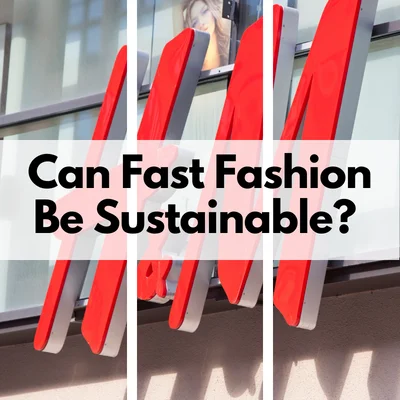
This is a complex, important question.
The fast fashion market size in 2022 is estimated to be $99.2 billion and growing. This is functioning within a global apparel market earning $1.7 trillion in revenue.
While only a portion of the fashion industry is directly categorized as “fast fashion,” the business model has influenced the entire industry. Currently, the largest fashion retailers include Zara, H&M, and UNIQLO. The notorious ultra-fast fashion retailer SHEIN climbing the ranks threatens to surpass these brands.
The rise and success of fast fashion has fundamentally changed the fashion industry.
In an industry that had traditionally operated around 2-4 seasons (collection releases) a year, fast fashion has popularized micro-seasons which means new collections and pieces every single week (hitting 52 “seasons” a year).
While this speed to market is a particular a trait of fast fashion companies, the rest of the industry is following suit. Even traditional luxury brands have moved further away from strict seasonality. They are implementing approaches that mimic the accessibility, ready-to-wear, and instant gratification that comes with fast fashion.
Fast fashion has also changed the collective attitude around garment pricing and ownership.
With constant releases at incredibly low prices, fast fashion has primed consumers to shop often and in excess. Shoppers can justify more purchases because of the lower price tag and end up viewing clothing as disposable.
This pattern of consumption has inevitably influenced how people think about clothes and, therefore, how brands operate to accommodate these mindsets created by fast fashion. While many brands may not be immediately recognizable as fast fashion, they operate under the same principles and practices.
Brands can even have more expensive pricing and still function like fast fashion.
With the clear hold of fast fashion on the consumer and its power over the industry, it’s vital that we consider how and even if fast fashion can be sustainable.
Why is fast fashion not sustainable?
With the rampant greenwashing that fast fashion brands love to incorporate into their marketing to convince us that they are more eco-friendly than they are, it’s no wonder that many people are asking, “Is fast fashion sustainable?” To get to the root of fast fashion’s environmental impact and whether or not fast fashion can be sustainable, we have to look at what makes fast fashion what it is.
Fast fashion is defined as the “approach to the design, creation, and marketing of clothing that emphasizes making fashion trends quickly and cheaply available to consumers.”
The business model is to fabricate micro-trends and produce them quickly at a low cost.
Due to the cheap price tag, fast fashion has to sell a lot of clothing to make the most of their low prices. Thus, they market in a way that encourages excess consumption.
By creating these fast trend cycles, they encourage a constant desire for newness so that customers keep coming back for more. And the low prices make it easy for the customer to justify shopping so frequently.
Quick production in high volumes at low costs means that the factories that produce fast fashion are forced to cut corners and push their workers to extremes to meet the demands of the brand. It is unnatural to be able to produce thousands of articles of clothing (from design to storefront) in a matter of days, yet that’s what the fast fashion business model is rooted in.
The only way it’s possible is through exploitation.
In order to determine if fast fashion can be sustainable, let’s look at the key traits of the fast fashion business model, what it takes to make these traits possible, and their impact.
What Makes Fast Fashion Fast Fashion:
1. Low Prices
Fast fashion is known for being cheap, and inorder to have low prices, you have to have a low cost of production. Therefore, brands pursue the cheapest factory partnerships they can get.
Often, this results in what is known as “the race to the bottom.”
Fast fashion deliberately seeks out countries to produce in that have fewer regulations and worker protections. Factories don’t have much bargaining power because they rely on the business from fast fashion brands. They are forced to comply with the demands to produce quickly and cheaply.
Less than 2% of garment workers earn a living wage. Additionally, fashion brands often use synthetic, plastic-based fabrics as they’re cheaper to produce.
2. Constant New Releases
“Fast” is inherent to fast fashion. Brands depend on the constant new releases of clothing to drive sales. To meet the speed, volume, and price demands, garment workers are forced to work 16+ hour days with little to no breaks.
The working conditions are unsafe and these workers are paid as little as factories can get away with.
3. Trendy
To keep customers buying the new releases, fast fashion fabricates trend cycles that make shoppers feel as though they’re behind or missing out if they don’t buy in. These micro-trends change quickly.
Fast fashion releases thousands of new pieces a week (even daily in the case of ultra-fast fashion).
To create that much “newness” defies realistic creativity and fashion design. Therefore, fast fashion brands often steal designs from small, independent designers and undermine those creators and their livelihoods by offering rip-offs at low prices— something a small brand can’t compete with.
With the trends changing as often as they do, shoppers typically dispose of their items after only 7 wears on average. This means that plastic-based fast fashion garments are sent to the landfill just months after they are produced, where they will be decomposing for centuries.
4. Fast Fashion Brands Depends on Overconsumption
These components of the fast fashion business model depend on each other. In order to fabricate rapid trend cycles, the brand has to release clothing often. To keep shoppers buying these releases, the prices have to be low enough for shoppers to justify the constant purchases.
To change one of these traits would undermine the others and disrupt the consumption cycle the business model relies on. Therefore, fast fashion both creates and depends on overconsumption and overproduction. This is inherently unsustainable.
Fast Fashion vs. Sustainable Fashion
Sustainable fashion requires 3 things: social equity, economic viability, and environmental protection.
Fast fashion mistreats and exploits people. Its operations do not consider the health of its workforce or planetary resources, which means that it isn’t maintainable for a long-term economic future. And it directly harms the environment through its fossil-fuel dependence, resource- and chemical-intensive production practices, and wasteful output. Fast fashion fails all 3 criteria for sustainability.
Why we need fast fashion to wake up:
Yet, we need fast fashion to move towards sustainability. If it continues on its current trajectory, we will soon reach a point of no return in which the fashion industry’s impact directly contributes to our failure to limit global warming according to the 1.5-degree benchmark set by the Paris Climate Agreement.
With the hold of fast fashion on the industry and its harmful environmental impact, we have to consider its role in the solutions. While the most sustainable solution would be eradicating fast fashion all together, that isn’t realistic. Fast fashion is a massive presence and we have to talk about how it can shift to be more sustainable.
Is it possible for fast fashion to be environmentally friendly?
Can fast fashion ever be sustainable? No. However…
As discussed above, fast fashion relies on quick speeds, high volumes, low costs, and trend-chasing. To change even one of these traits to be more sustainable, the fast fashion business model would crumble.
Fast fashion, as it’s defined, can never be sustainable. To make fast fashion sustainable would be to change the fundamental aspects that make it what it is. To be truly sustainable, fast fashion brands would cease to be “fast fashion.”
Fast fashion cannot be sustainable.
But can fast fashion brands become sustainable?
Could a fast fashion brand be willing to make the changes to pursue sustainability and give up its business model? Theoretically, yes.
However, it’s highly unlikely. Fast fashion has been highly successful in profits and made its owners and CEOs into billionaires. They’ve shown a clear prioritization of profit over people.
Additionally, many of the leading fashion brands are publicly traded, meaning their sole priority is maximizing shareholder value. What keeps the people at the top rich? Keeping operational costs low and profits high.
A publicly traded fast fashion business that started shifting towards sustainability would receive much friction from investors who fear the short-term impact on the bottom line. Until shareholders recognize the long-term value of a sustainable business, we may have to look for solutions elsewhere.
A more immanent realistic shift towards sustainability for fast fashion will come from regulatory pressure— something we are already starting to see take place. With newly proposed bills like the New York Fashion Act and the FABRIC Act, the fashion industry will be forced to confront its problems through policies that require supply chain mapping and reporting and environmental and labor standards.
How to Make Fast Fashion More Sustainable
While fast fashion can never be sustainable, there are actions these brands can take that will push the industry in a better direction. Given the influence of the business model of the fashion industry, we need fast fashion to participate in the sustainable solutions available.
Here are some actions that fast fashion can take to shift the industry:
- Disclose their supply chain: Many fashion brands aren’t even fully aware of their full supply chain and factory partners. They use layers of contracting and subcontracting to delegate and bypass responsibility. A first, vital step to better practices is knowing all of the entities that participate in making a company’s product and then reporting that. Supply chain transparency allows for better accountability.
- Ensure fair payment and treatment for garment workers: Several reports reveal that paying a garment worker fairly doesn’t come at a massive cost to the brand. The Clean Clothes Campaign suggests that just 10 cents a shirt could mean better pay for a worker.
- Slow down production: While cutting back on production threatens the viability of the fast fashion business model, it is necessary. With around 100 billion garments being produced yearly for a population of 8 billion people, our planet cannot sustain this production rate. We have to start shifting towards degrowth.
- Stop greenwashing: Fast fashion brands have recognized the consumer demand and desire for sustainability and have answered it in their marketing, not in practice. When fast fashion brands greenwash, they confuse the customer about what is truly sustainable and it’s used to drive more sales rather than actually address the industry’s environmental problems.
Sustainability and Fast Fashion
While it’s clear that fast fashion cannot be sustainable, it’s also clear that we need these influential brands to move in that direction. As consumers and citizens, we can participate in holding brands accountable to take these actions and urging governments to enact the systemic changes we need.
In the meantime, it’s best if we can avoid putting any more dollars or support towards these harmful fast fashion brands. These companies need to see that they will lose customers if they continue to use exploitative practices and put the future in jeopardy.
Change can happen. Change will happen. Whether by choice now or force later. Let’s aim to be on the side of choice when we can!
If you liked this, check out our other articles on this topic!
- 11 Surprisingly Effective Ways to Quit Fast Fashion
- How to Shop For Sustainable Fashion on A Budget in 2023
- 20 Best Sustainable Fashion Influencers In 2023
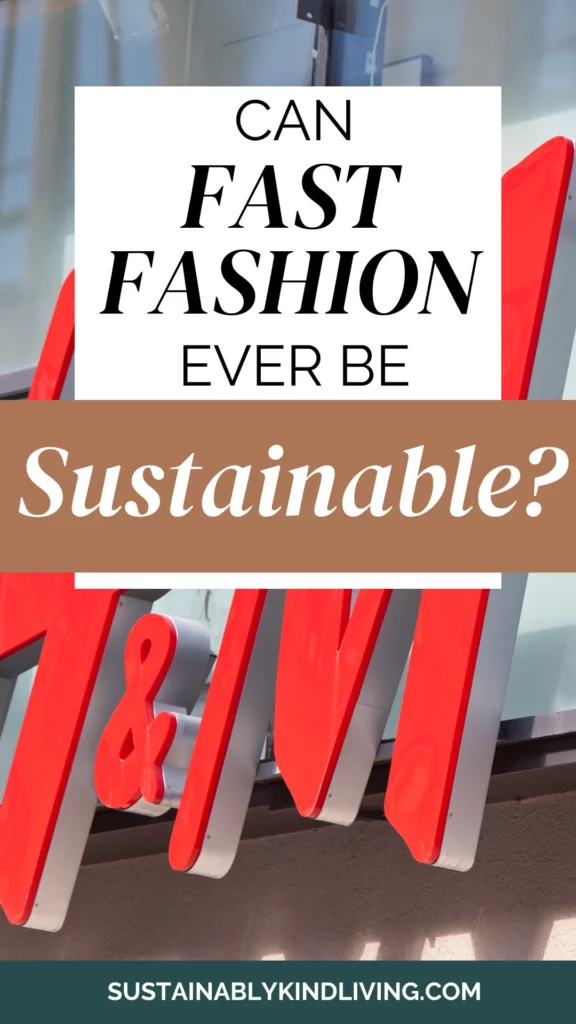
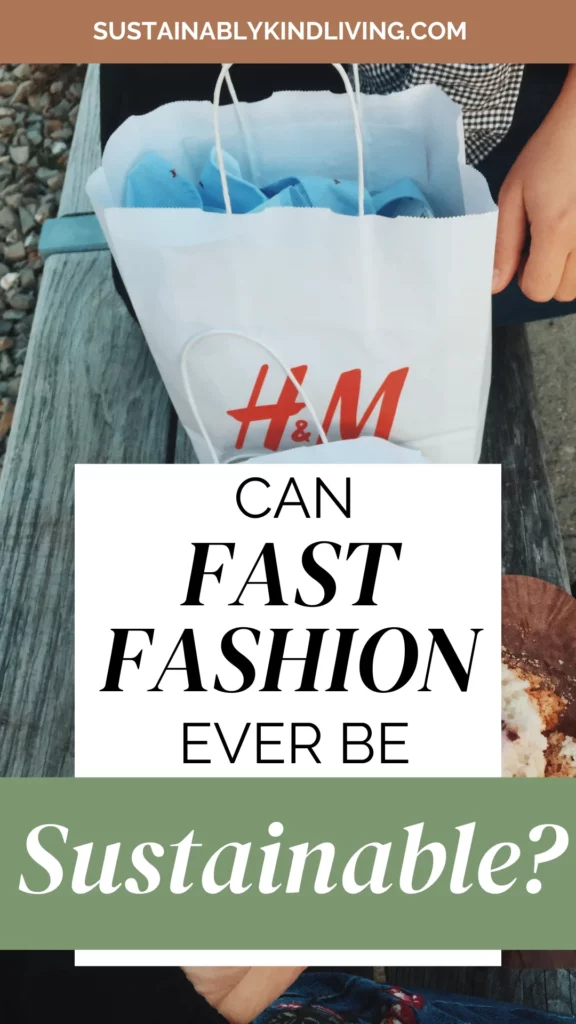
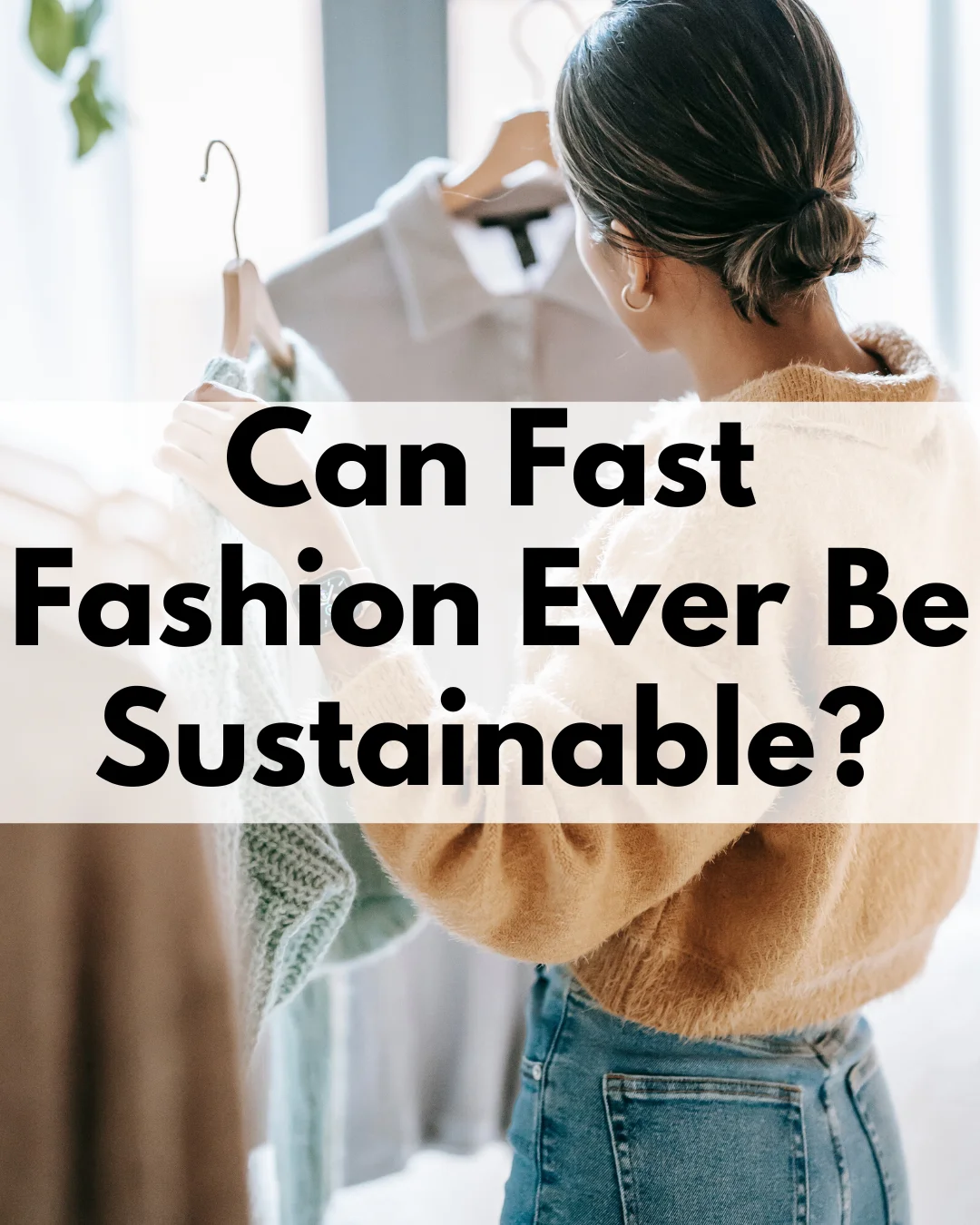

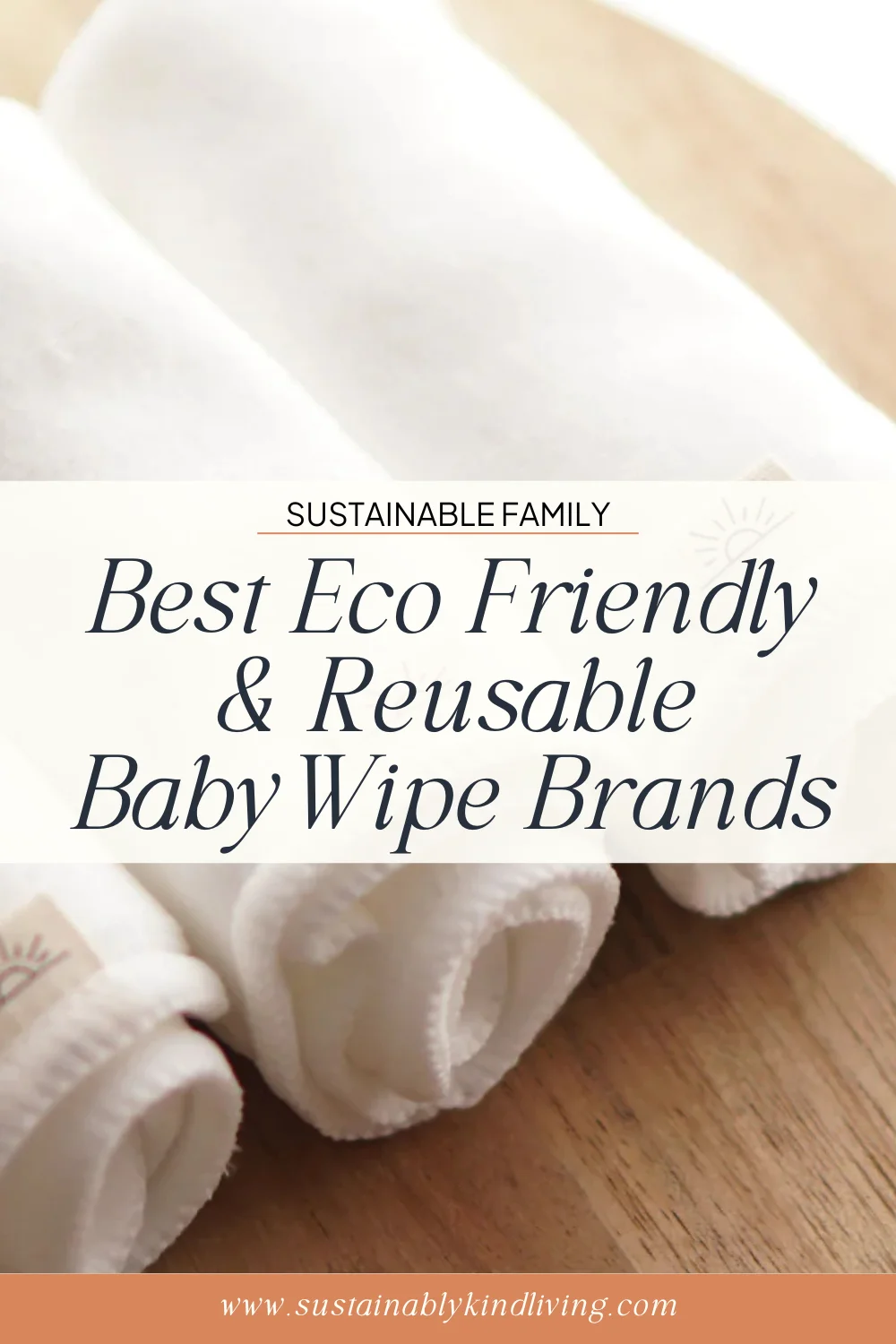





+ show Comments
- Hide Comments
add a comment